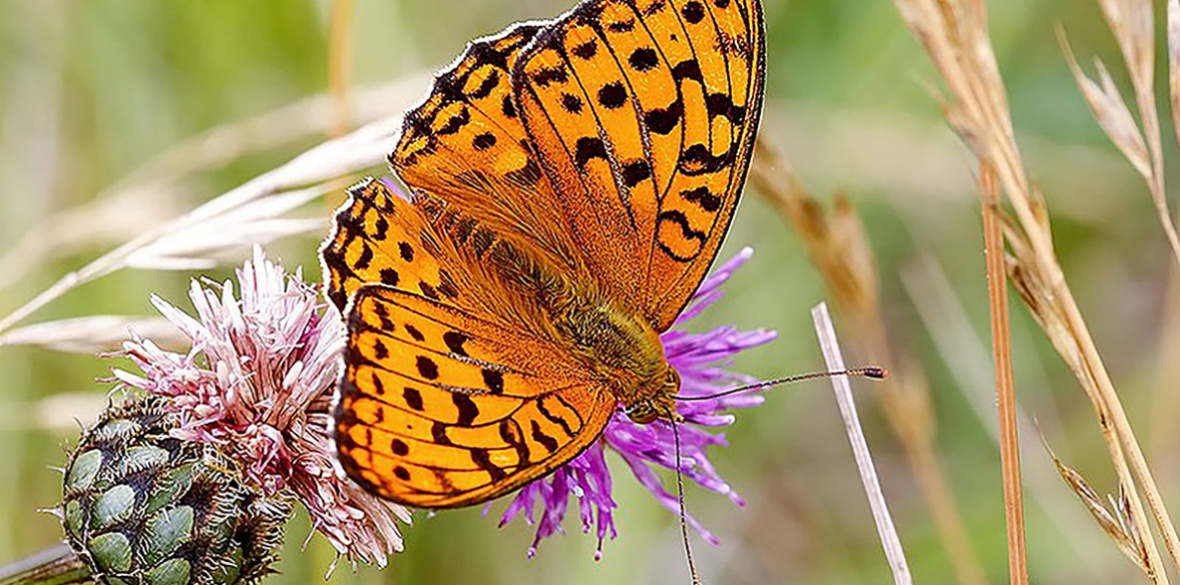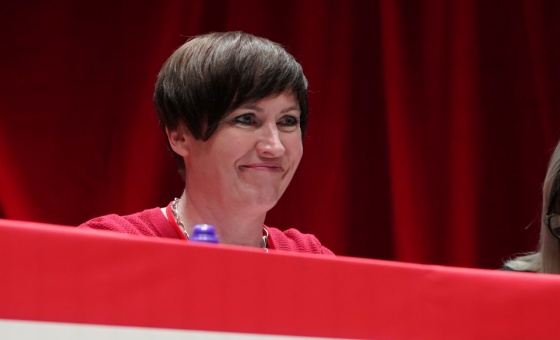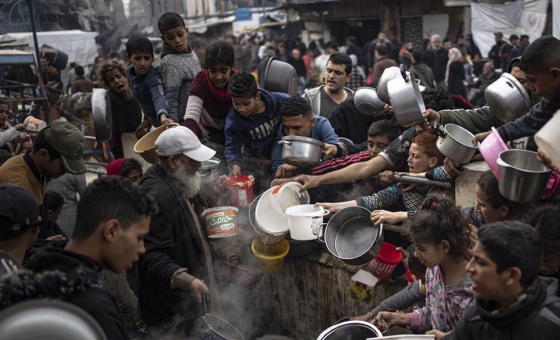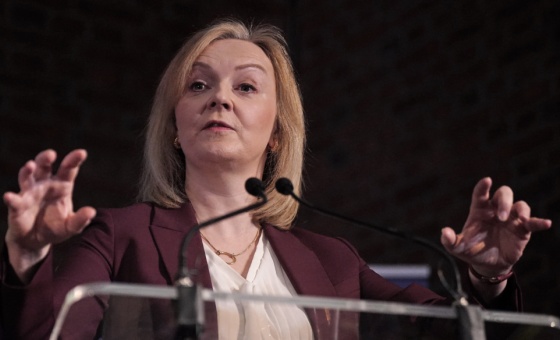This is the last article you can read this month
You can read more article this month
You can read more articles this month
Sorry your limit is up for this month
Reset on:
Please help support the Morning Star by subscribing here
DID you do your duty of the decade and fill in your census last Sunday? You won’t of course if you live in Scotland where, because of the pandemic, the census has been delayed for a year.
The census is a survey that has happened every 10 years and gives us a picture of all the people and households in Britain.
It is likely that the March 2022 census may be the last one ever for the ironic reason that the government collects all the information it needs from the many other sources of data it gathers on every one of us in normal day-to-day contacts.
Your answers to the census questions will help organisations make decisions on planning and funding public services in your area, including transport, education and our wonderful NHS.
A big row has erupted after transgender charities urged people to ignore a High Court ruling that stated sex must not be self-identified on the 2021 census.
Just a week before the census date, the Office for National Statistics (ONS) backed down from a legal battle over guidance for the question: “What is your sex?”
The guidance had advised people to “use the sex recorded” on either a “birth certificate, gender recognition certification, or passport.”
But the ONS changed its guidance to advise people to only use the sex recorded on a birth certificate or gender recognition certificate when answering the question.
This came after High Court Judge Mr Justice Swift ruled the guidance should be rewritten to remove the words “such as” and “passport.”
Campaigners hit back and encouraged people to ignore the new guidance and said people should not feel pressured to answer the question.
Transgender charity Mermaids lashed out at the guidance by the ONS and said: “It is not mandatory to read the ONS guidance before completing the census.”
Here are my predictions for some key general results. I think the population of the United Kingdom (UK) will be 63.2 million and PM Boris Johnson and his mean Tory government will sell short the NHS and the heroes who work within it.
Here are some other useful statistics taken from the last 2011 census — 10 years ago there were 31 million men and 32.2 million women in the UK.
The estimated populations of the four constituent countries of the UK are 53 million people in England, 5.3 million in Scotland, 3.1 million in Wales and 1.8 million in Northern Ireland.
The population of the UK increased by 4.1 million (nearly 7 per cent) between 2001 and 2011.
Over the last hundred years the population of the UK has increased by 21.1 million (50 per cent).
The population of the UK aged 65 and over was 10.4 million (16 per cent of the UK population) in 2011, 9.4 million in 2001 (16 per cent) and 2.2 million in 1911 (5 per cent).
The UK population was estimated to be 66,796,807 in mid-2019. The growth in the year to mid-2019 was the slowest since mid-2004, at 0.5 per cent (361,000).
Net international migration of 231,000 people was 44,000 fewer than in the year to mid-2018.
All these numbers about we humans got me thinking about the other animals that share our island home with us.
There are 15 million sheep – half of them are lambs – 9.6 million cows provide milk or beef, pigs number 4.6 million.
Deer, which I write about often, have reached an amazing population over two million, the highest deer population for over 1,000 years. No wonder they are a real problem in our countryside.
We know that populations of most of the UK’s wildlife have plummeted by an average of 60 per cent since 1970, according to the most comprehensive analysis to date.
The equivalent of the human census is something called the State of Nature report. It reported serious concern about bats, birds such as the willow tit and the turtle dove, and insects such as the high brown fritillary butterfly.
The report finds the losses to all animals, plants and marine life show no sign of letting up, despite some successes in protecting individual species.
It found that 41 per cent of species have decreased in abundance, while just 26 per cent have increased.
A quarter of UK mammals and nearly half of the birds assessed are at risk of extinction, according to the report, which was produced by a coalition of more than 70 wildlife organisations and government conservation agencies.
When plants, insects and fungi are added, one in seven of the 8,400 UK species assessed are at risk of being completely lost, with 133 already gone since 1500.
The causes of the losses are the intensification of farming, pollution from fertiliser, manure and plastic, the destruction of habitats for houses, the climate crisis and invasive alien species.
The State of Nature report shows no significant improvement since the last one in 2016, which said the UK was “among the most nature-depleted countries in the world.”
The losses mirror the global annihilation of wildlife, which scientists suggest is the start of the sixth mass extinction on Earth and is undermining the natural life-support systems that humanity relies on for air, water and food.
“We know more about the UK’s wildlife than any other country on the planet, and what it is telling us should make us sit up and listen,” said Daniel Hayhow of the RSPB, the lead author of the report.
“We need to respond more urgently across the board.”
“We recognise that the continuing declines in biodiversity require urgent action from across society,” said Marcus Yeo, the chief executive of the Joint Nature Conservation Committee, Britain’s official conservation advisers.
Tory government funding for wildlife and nature has fallen by 42 per cent since 2009, while an official report in March concluded that Britain will miss almost all its 2020 nature targets.
In addition to the 214 priority species analysed in the report, a broader examination of almost 600 species also found a drop in population of 13 per cent since 1970.
But the report states: “Prior to 1970, the UK’s wildlife had already been depleted by centuries of persecution, pollution, habitat loss and degradation.”
The report found the once widespread black rat, hedgehogs, rabbits and water voles are also falling in numbers.
The destruction of nature extends offshore. As I reported just a week ago the seafloor is being scoured or disturbed by fishing gear in more than half of all UK waters. Half of all commercial fisheries are overexploited.
Plastic pollution affecting seabirds like northern fulmars is rising too, with 93 per cent of beached birds having eaten plastic.
Plastic has been found in marine mammals like dolphins, seals and even the occasional visiting whale.
The report did highlight some inspirational conservation success stories, where people have come together to protect and restore wildlife.
The fen raft spider was threatened with extinction in the UK, but the Wildlife Trusts worked with the EU to fund habitat restoration and the species is now increasing.
Other successes include the saving of corncrakes and bitterns, the large blue butterfly and the return of otters, now found in every British county.
Let’s take a look at some statistics that compare animal numbers with the human census statistics.
Statistics are wonderful things. Take ants, hard to count, but did you know that ants outweigh humans in biomass — putting billions and billions of tons up against humans’ fewer than 500 million.
Out at sea the basic building block of the food chain, marine krill, have an unbelievable population estimated at 500 trillion.
The commonest British wild animal is the brown rat, with a population of almost seven million, still far short of human numbers.
Rarest must be the single Arctic walrus — as big as a cow — that floated south on an iceberg last week to be seen on rocks near Broad Haven South beach, Pembrokeshire.
I have written dozens of times that the most common bird in Britain is the wren, far more common than pigeons or sparrows. There are thought to be around 8.5 million breeding in the UK.
In fact I was very wrong, far more numerous than the wren is the humble domestic chicken.
There are approximately 29 million kept for their eggs and 116 million being bred for Colonel Sanders and other meat eaters.
There are also 4.9 million turkeys, two million ducks and 105,000 geese.
That’s it, enough numbers for me, I’m off to see the gambolling lambs that are filling the fields around my home and if I can’t get to sleep I’ll try counting sheep.










